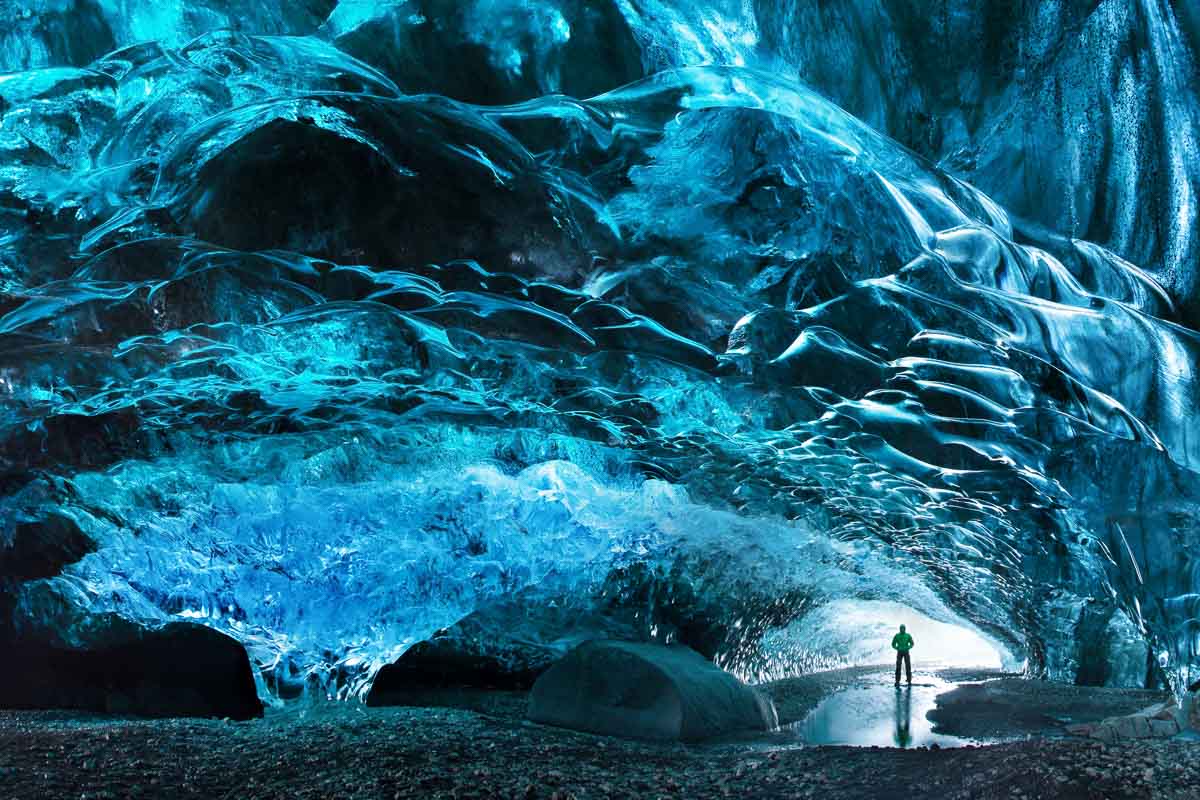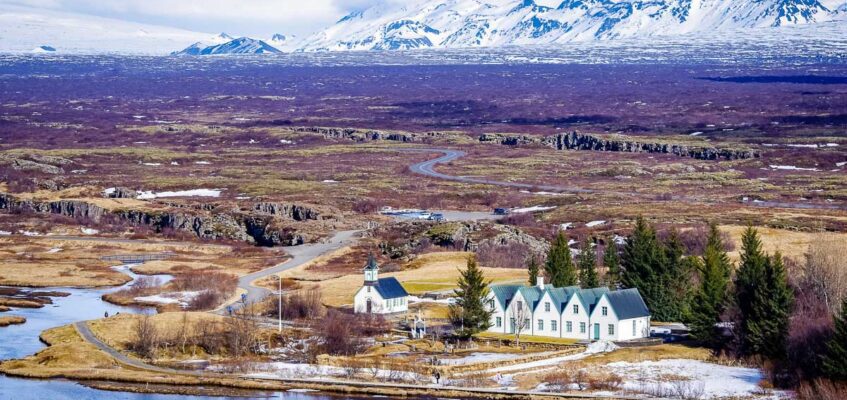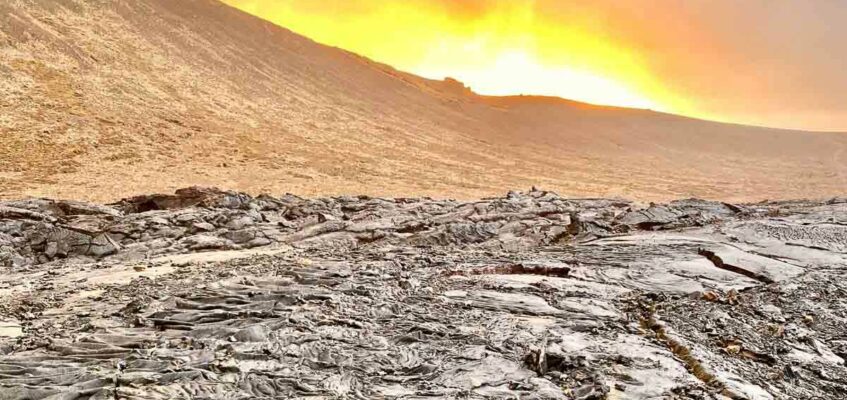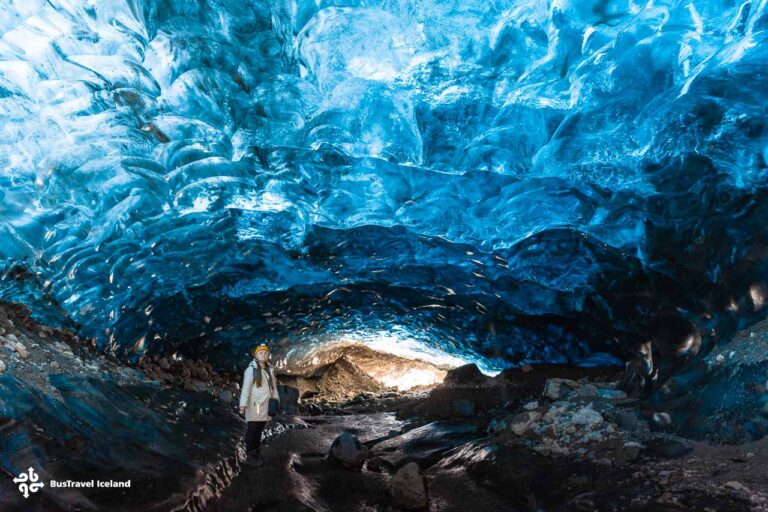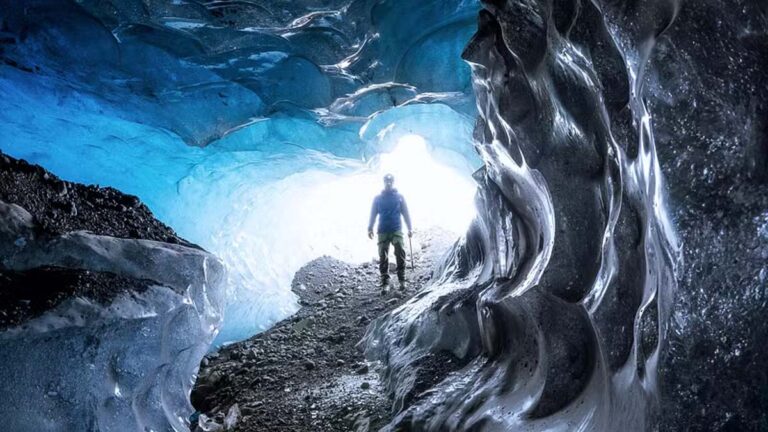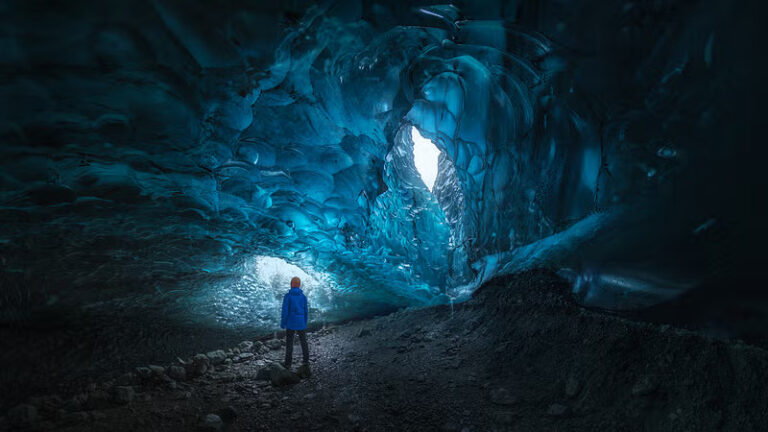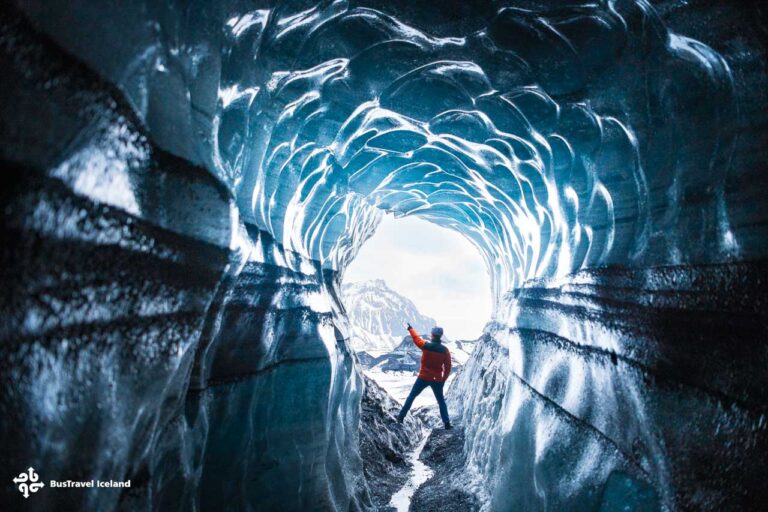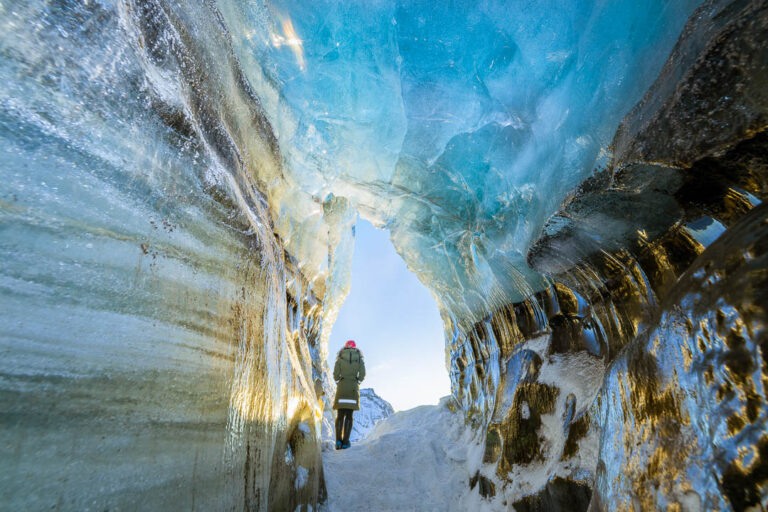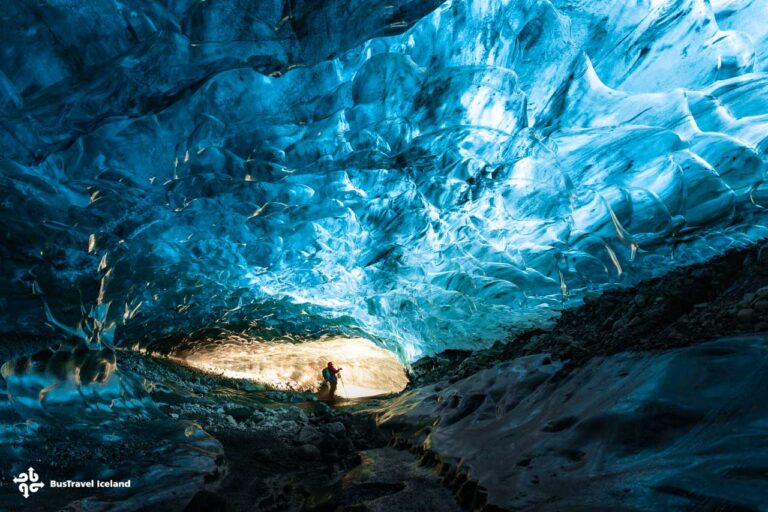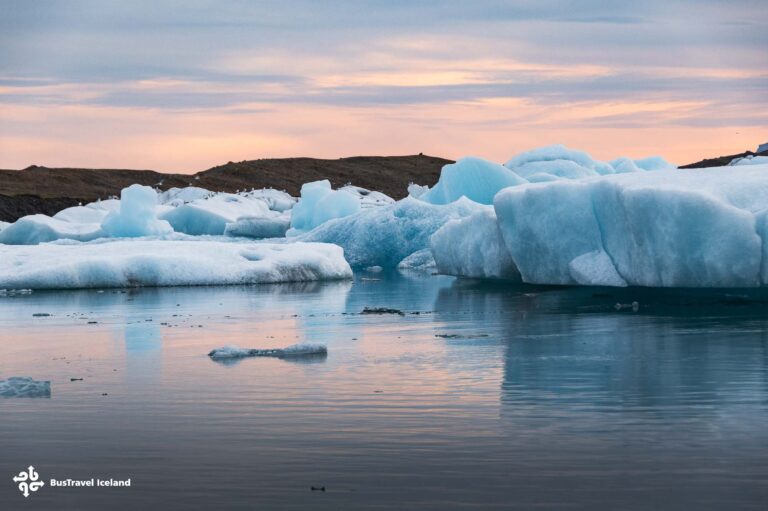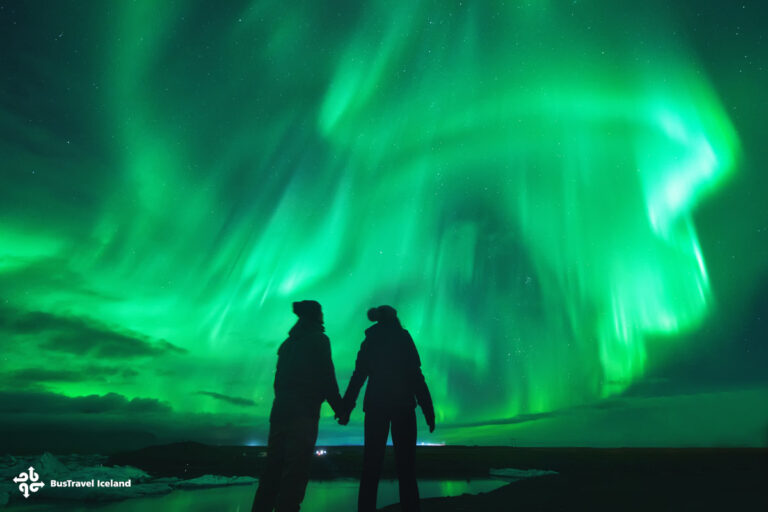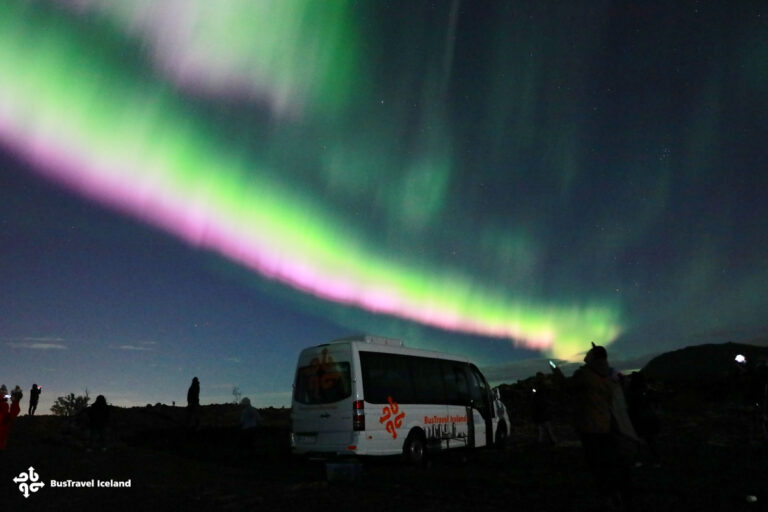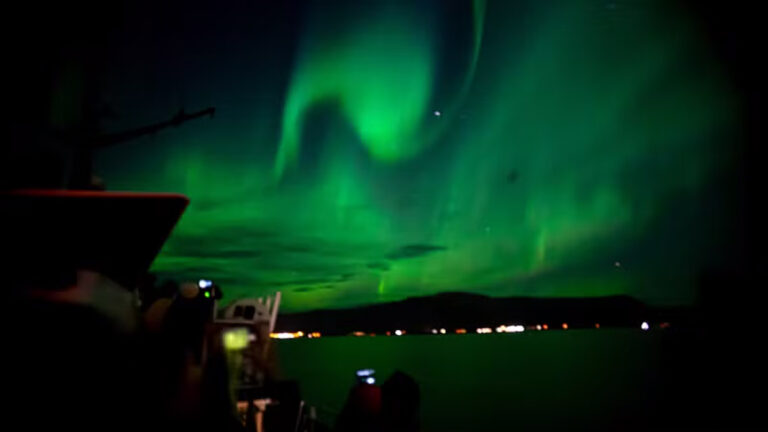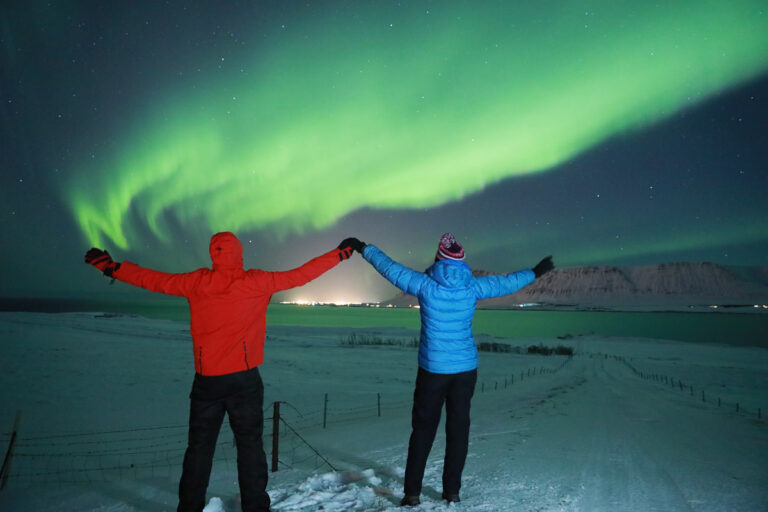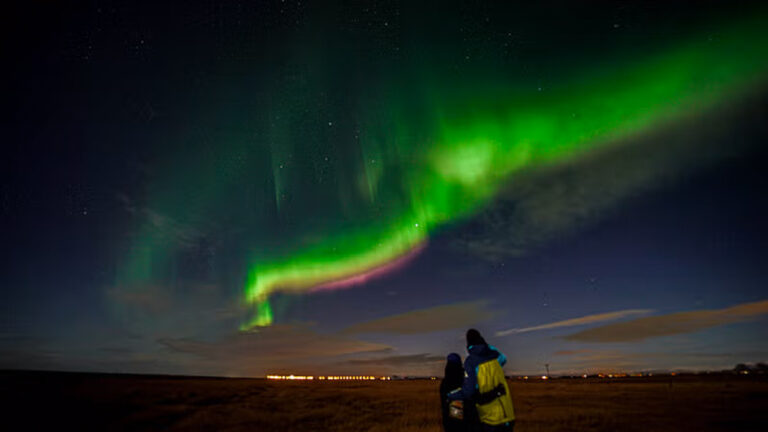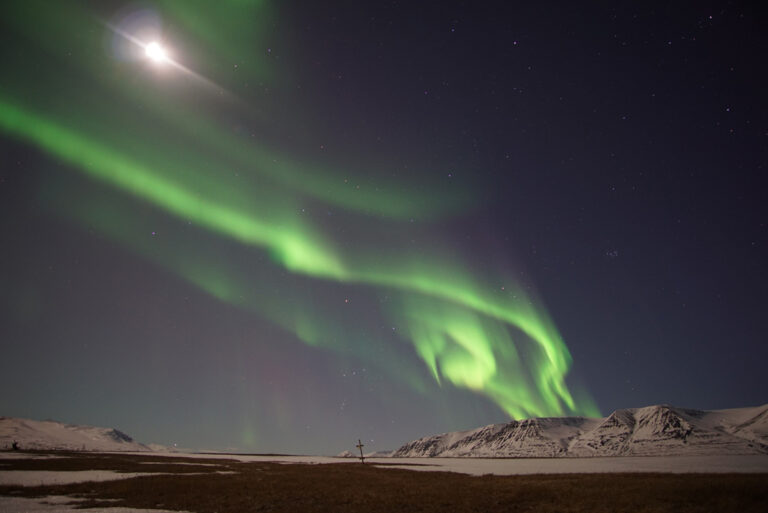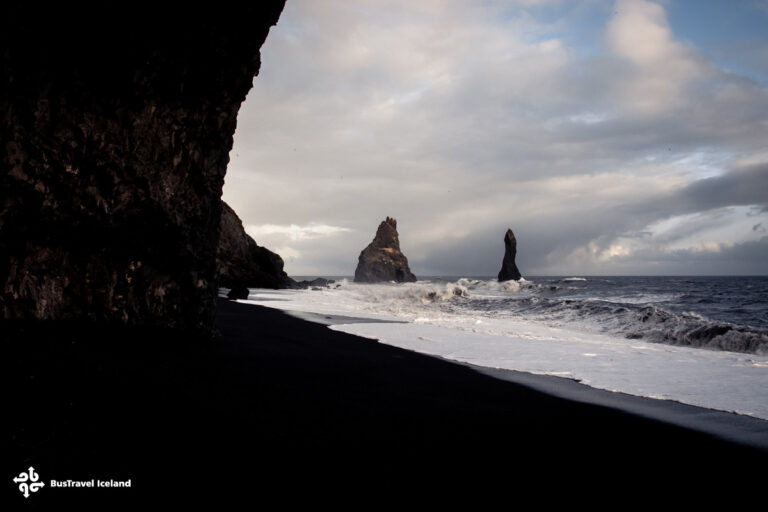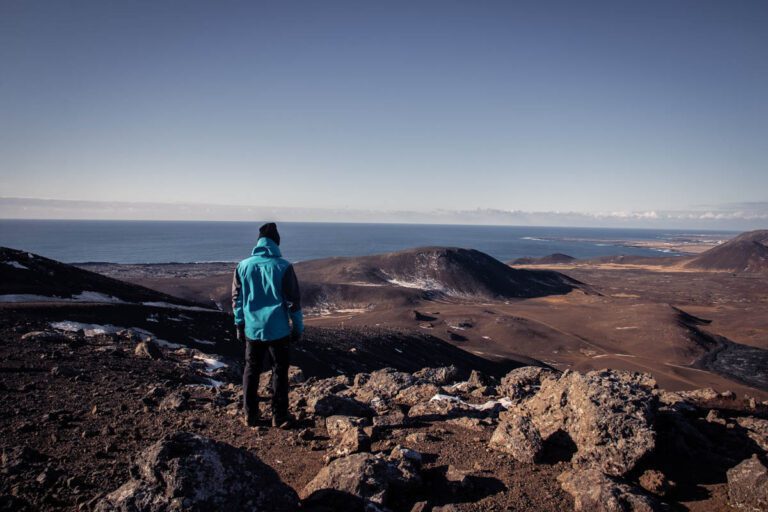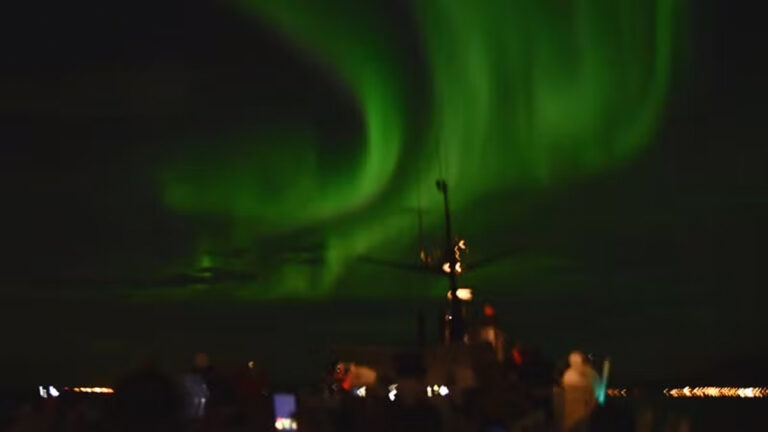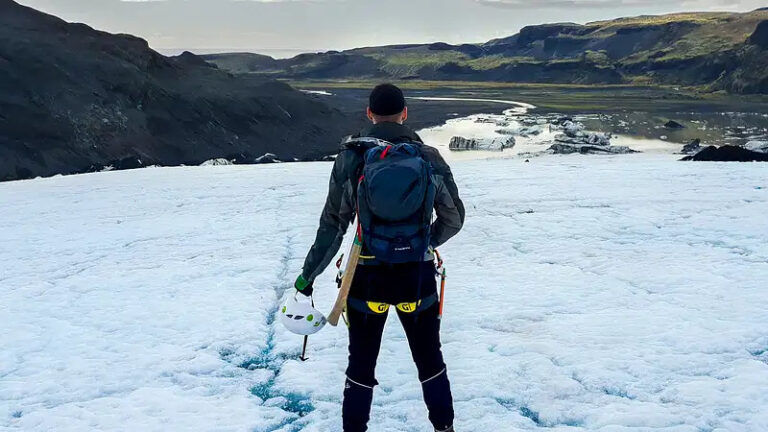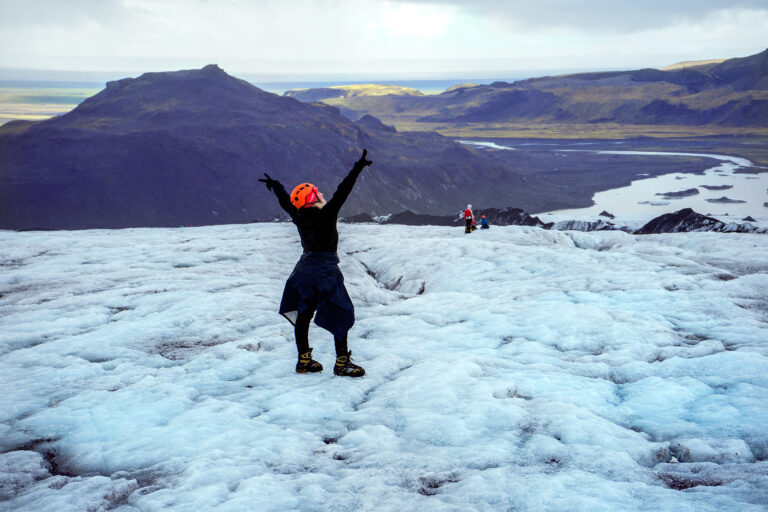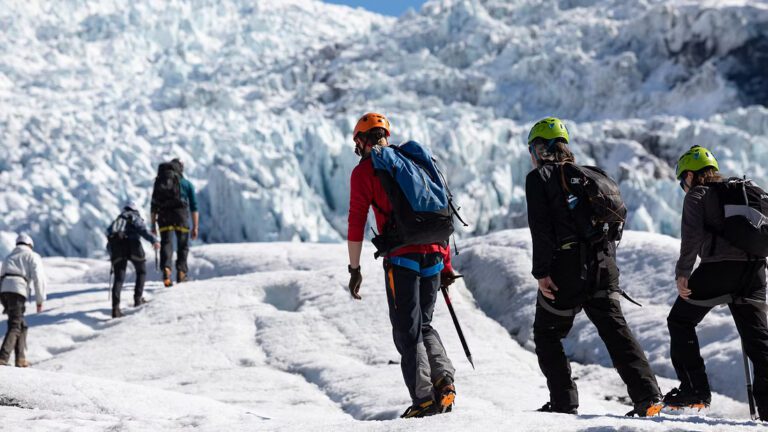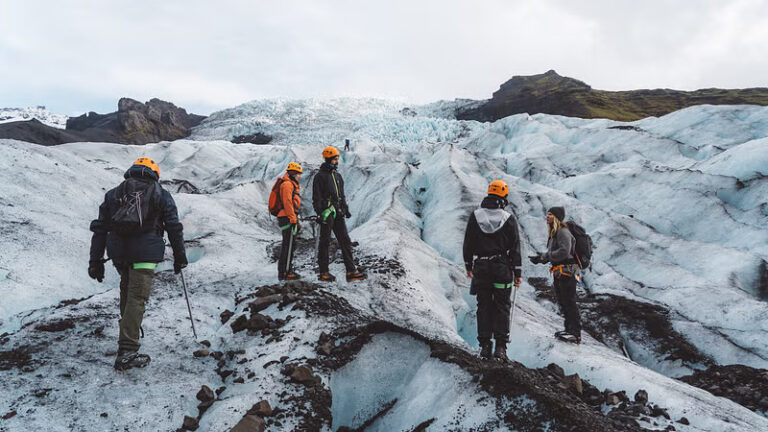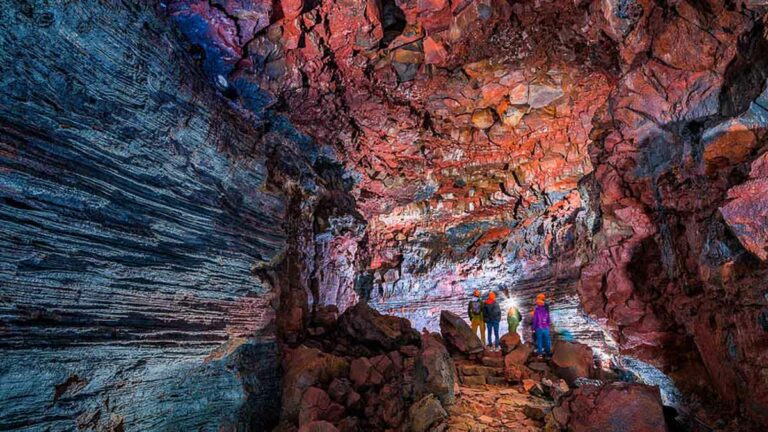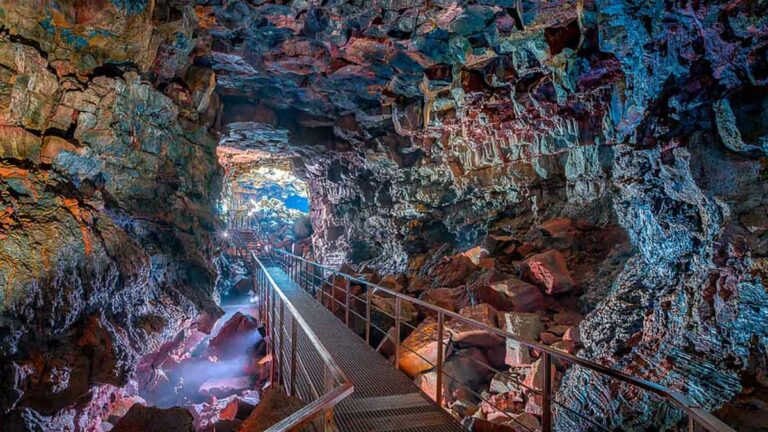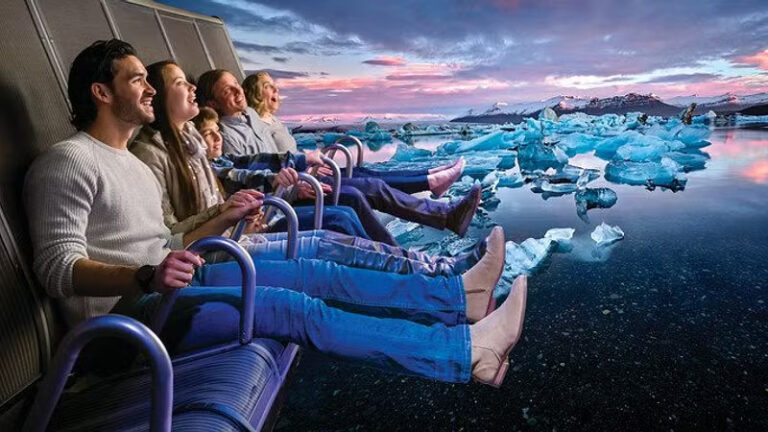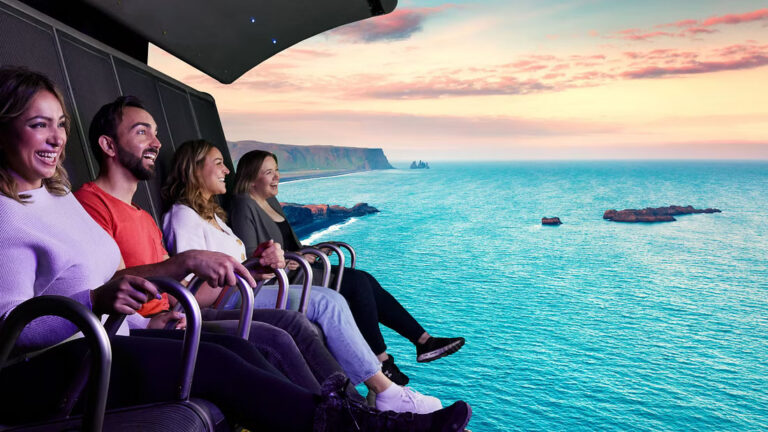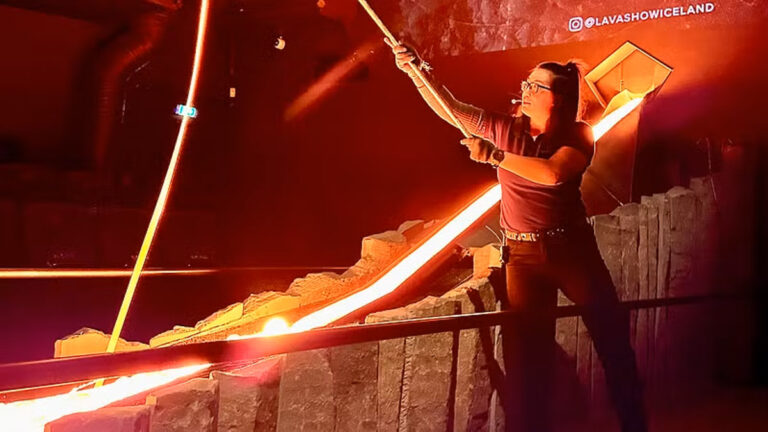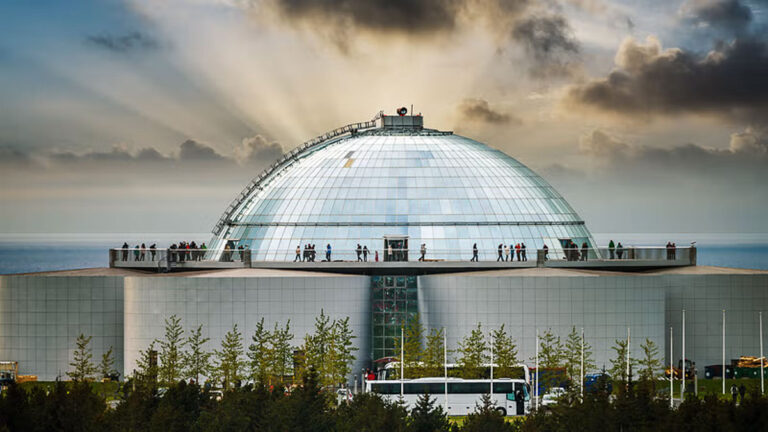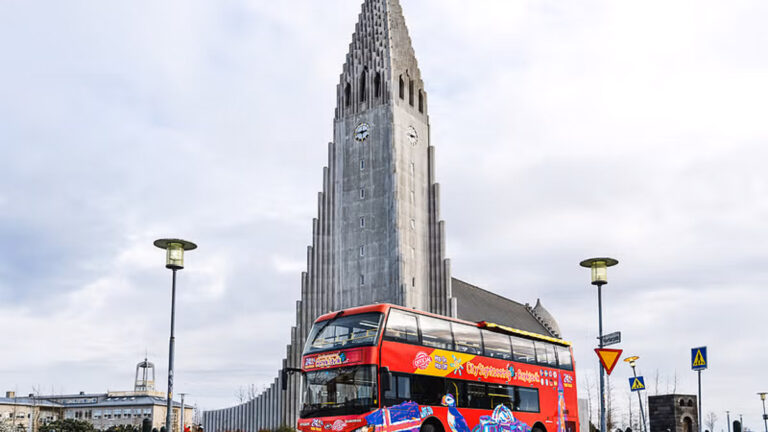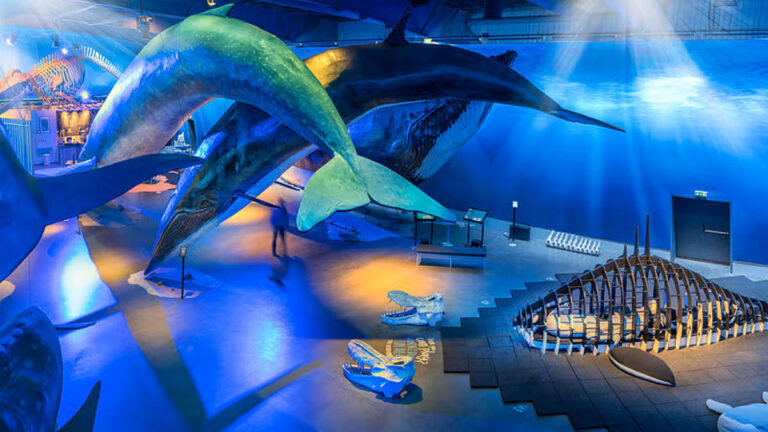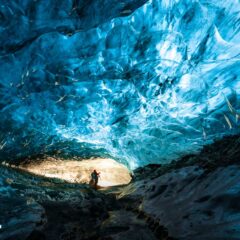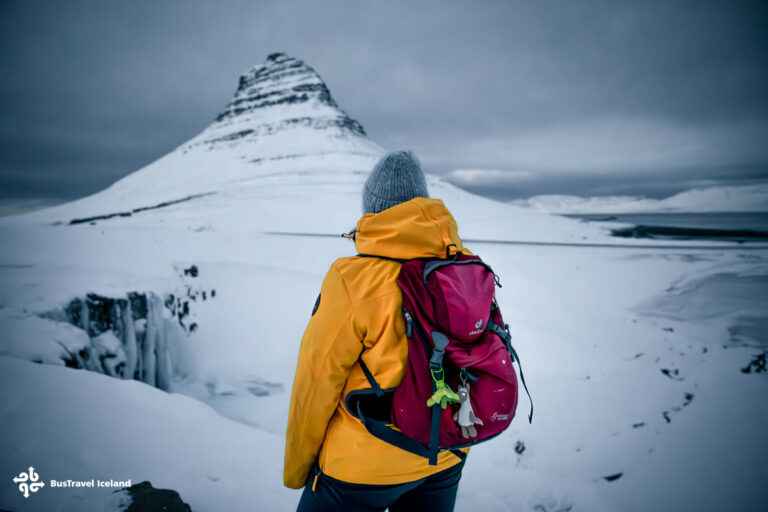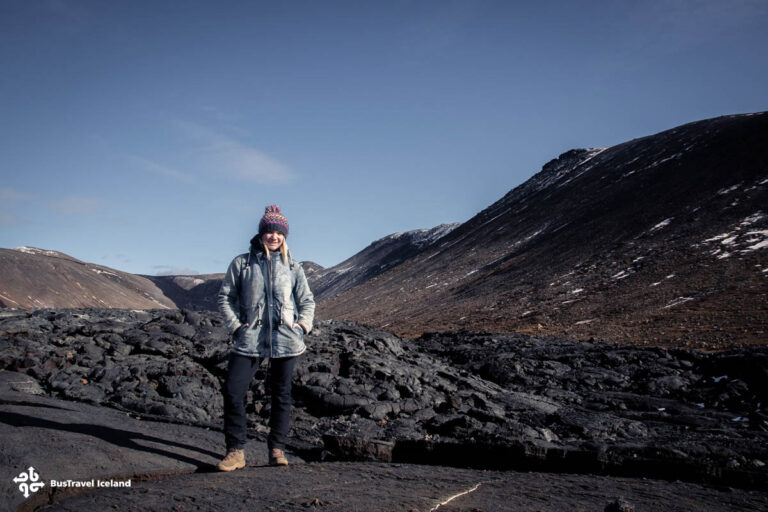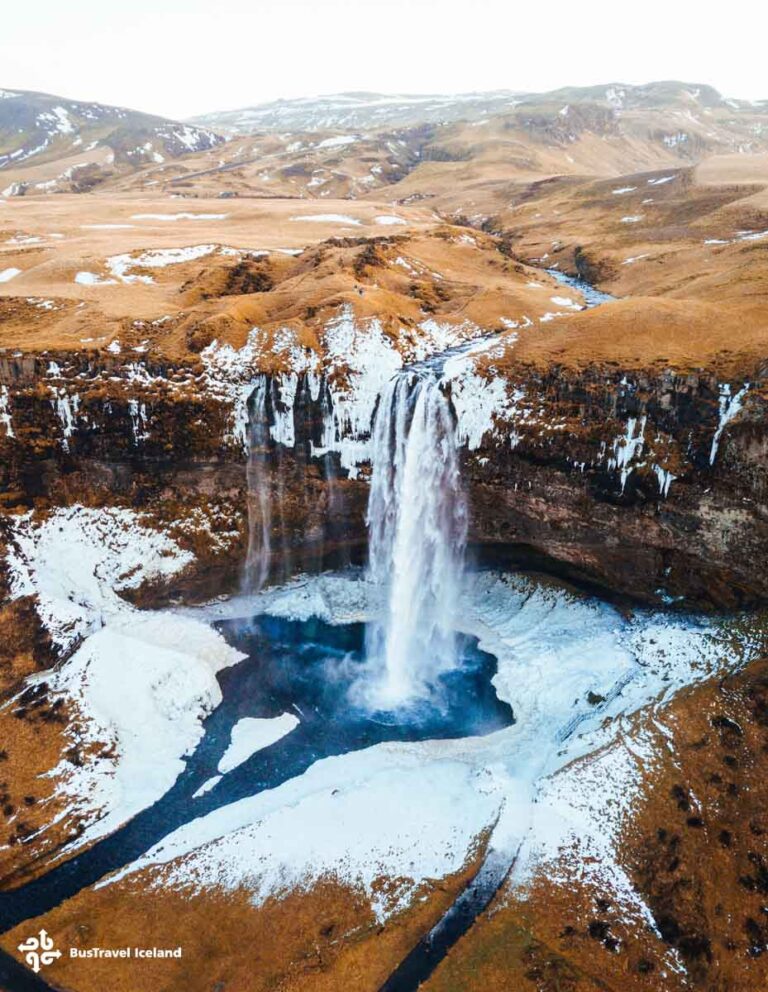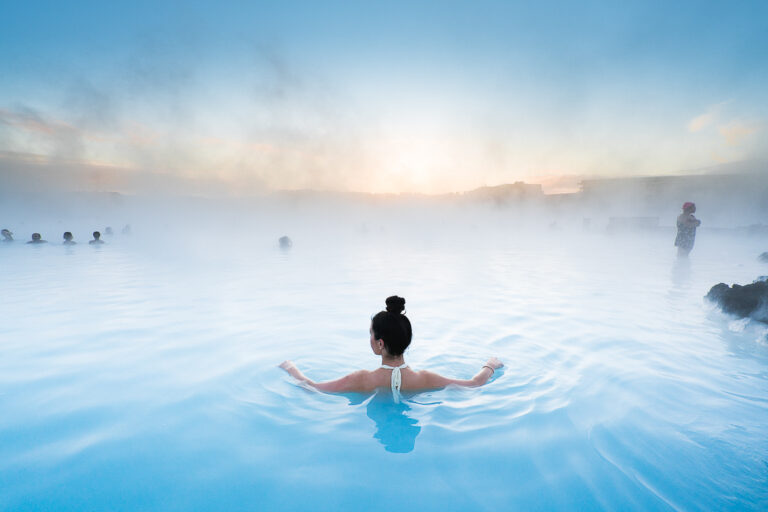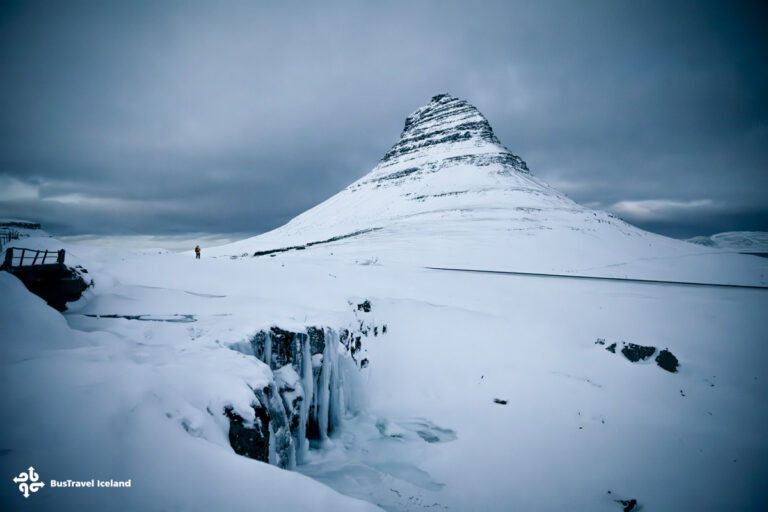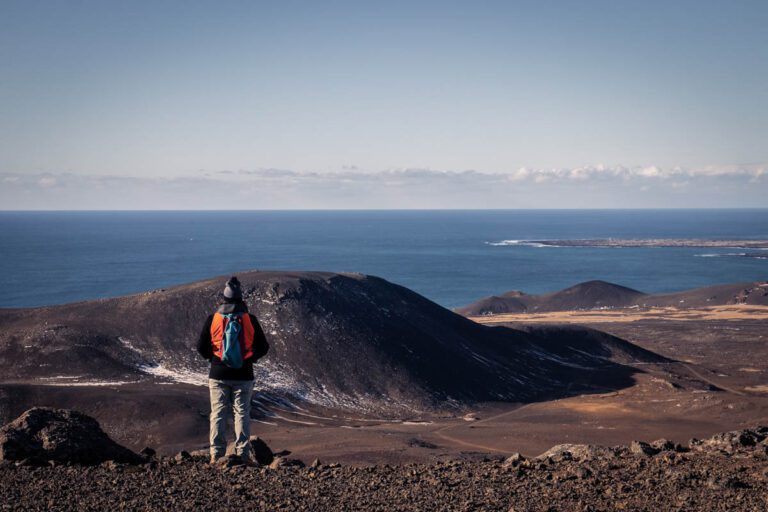Visit Iceland in November – All You Need to Know
- Iceland by Month
- 8 Oct 2025
Iceland in November carries a quiet magic. The days are short, the air is crisp, and the landscapes seem charged with quiet drama—icy waterfalls, volcanic black sands, and mountains dusted with snow. By night, the sky comes alive with the northern lights, swirling in colors so vivid they make you forget the cold. There’s an otherworldly hush to the countryside, a magic in the mix of fire and ice, solitude and wonder. If you think you’ve seen Iceland, November will make you see it all over again—darker, moodier, and utterly unforgettable.
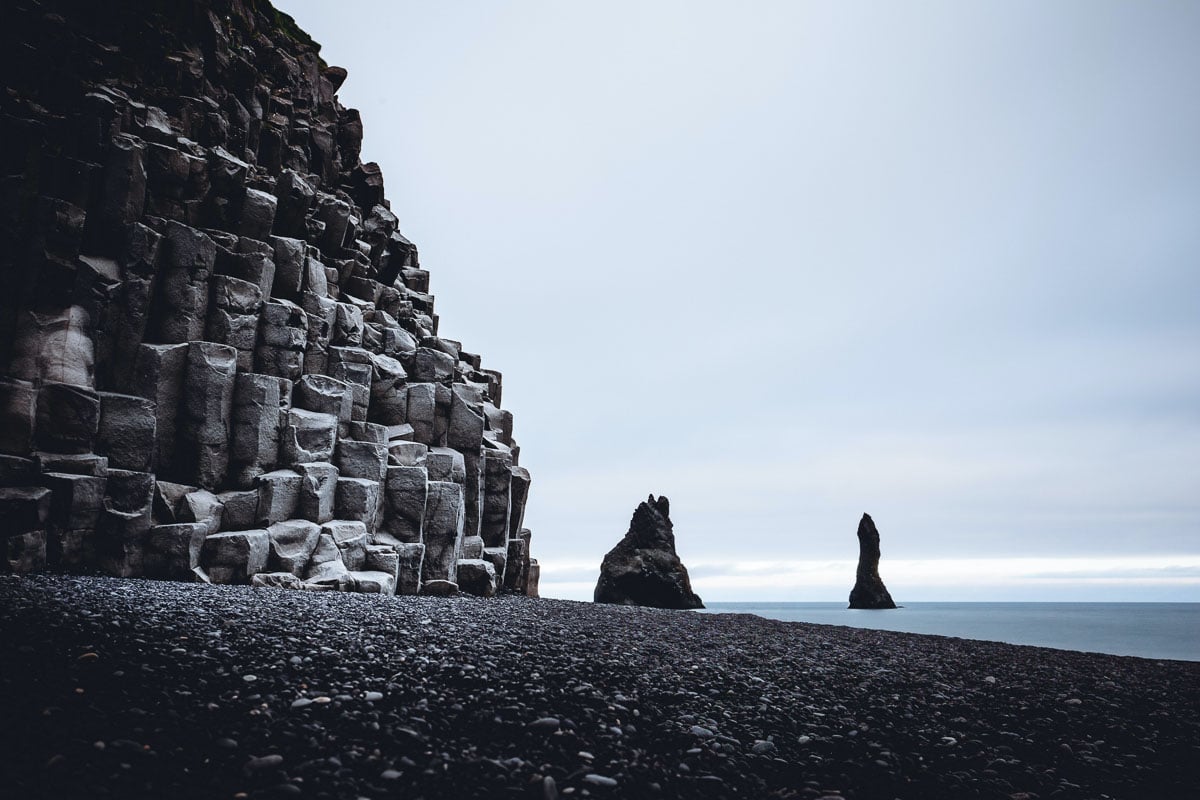
Planning a trip to Iceland in November raises a lot of questions: What’s the weather really like? What should you expect on the ground, and is this a good time to visit? This guide covers everything you need to know: the weather and daylight, tips for spotting the northern lights, and what to pack to stay warm and comfortable. On top of that, you’ll find curated lists of the best things to do, suggested itineraries, and top tours, making this your essential guide to experiencing the full drama and beauty of Iceland in November.
What is Iceland Like In November
November is when Iceland leans into winter. Daylight shrinks fast while temperatures hover near freezing. Snow is common in the north, rain more likely in the south, and the highlands remain closed until spring. The landscapes feel cinematic: waterfalls edged with ice, black-sand beaches whipped by storms, and mountains layered in their first snow.
It’s also Iceland’s shoulder season. Summer crowds are gone, and the Christmas rush hasn’t begun, so flights and accommodation tend to be cheaper, though the country is never truly low-cost. Reykjavík hotels and guesthouses stay busy, while countryside lodgings are quieter, often leaving room for last-minute bookings.
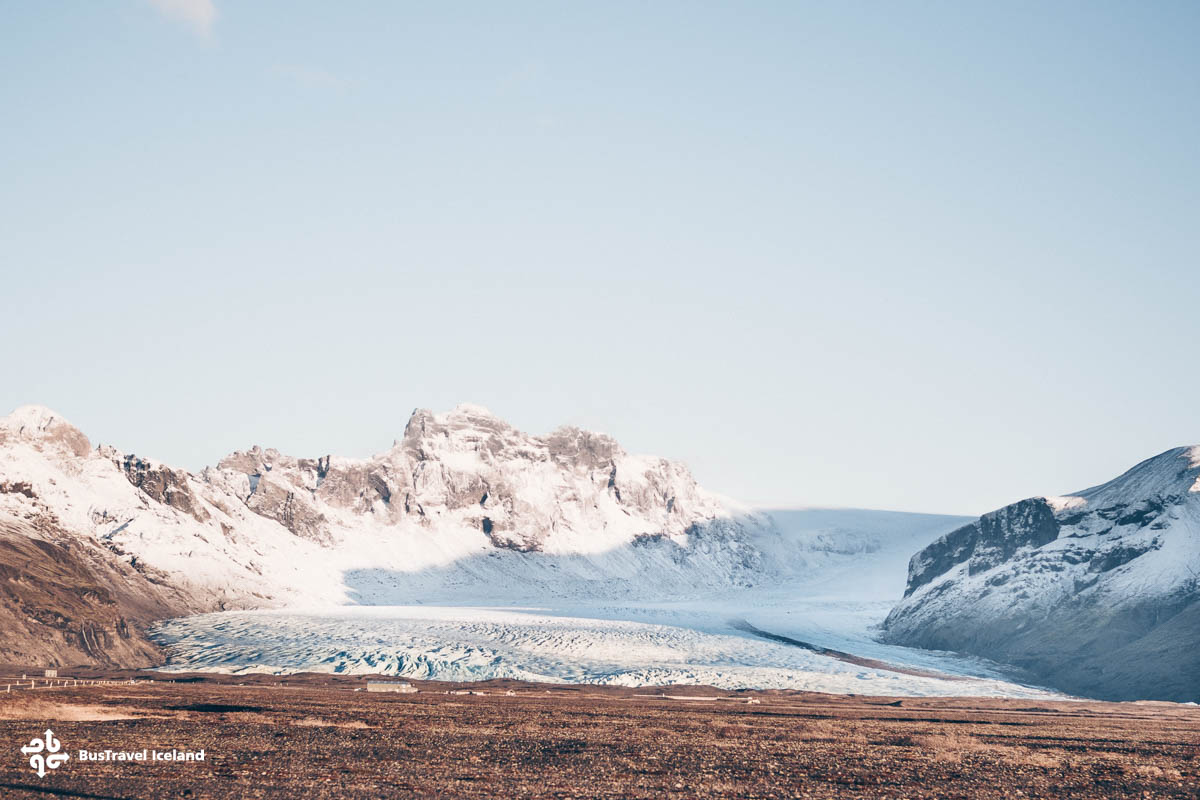
Travelers in November are a mix of photographers chasing dramatic light, aurora hunters, and visitors who prefer hot springs and waterfalls without the summer bustle. Guided tours of the Golden Circle, the south coast, and newly opened ice caves are popular, while independent travelers often stick to shorter itineraries—Reykjavík and nearby highlights—rather than tackling long drives around the Ring Road on icy roads with limited daylight.
The payoff? A moody, atmospheric Iceland with fewer crowds, lower prices, and long nights made for northern lights.
─────────────────────────────────────
Please read Iceland in October to learn more about Iceland.
─────────────────────────────────────

Iceland’s Weather in November
November’s temperature in Iceland, typically ranging from –1°C to 4°C (30–39°F), is when the country settles into winter, though the experience shifts depending on where you are. In Reykjavík, the average temperature hovers just above freezing, between 0°C and 4°C. Snow falls occasionally, but rain and wind are more common along the south and west coast, where the maritime climate keeps conditions milder yet unpredictable. A single day might bring drizzle, a burst of sunshine, and a sudden squall.
Travel north to Akureyri, and the change is immediate. Here, the average sits colder, from –3°C to 2°C, and snow is far more likely to settle on the ground. Roads into the fjords can be icy, sometimes blocked, and the atmosphere feels more wintry than in the capital.
Across the country, the pattern is clear: the south and west are generally wetter but milder, while the north and interior slip into snow earlier. The highlands, already deep in winter, are closed until spring. Wind is a constant factor everywhere, often making it feel colder than the thermometer suggests.
Daylight dwindles quickly: about eight hours at the start of the month, shrinking to just five hours of daylight by the end. Precipitation averages 76 mm in Reykjavík—a mix of rain and snow—while the north sees less rainfall but more persistent snowfall. Overall, you can expect conditions ranging from slushy city streets to snowbound valleys.
For travelers, the message is simple: pack layers, prepare for sudden shifts, and embrace the mood. November’s weather is unpredictable, yes, but it also sets the stage for Iceland at its most dramatic—icy waterfalls, snow-dusted lava fields, and skies dark enough for the northern lights.
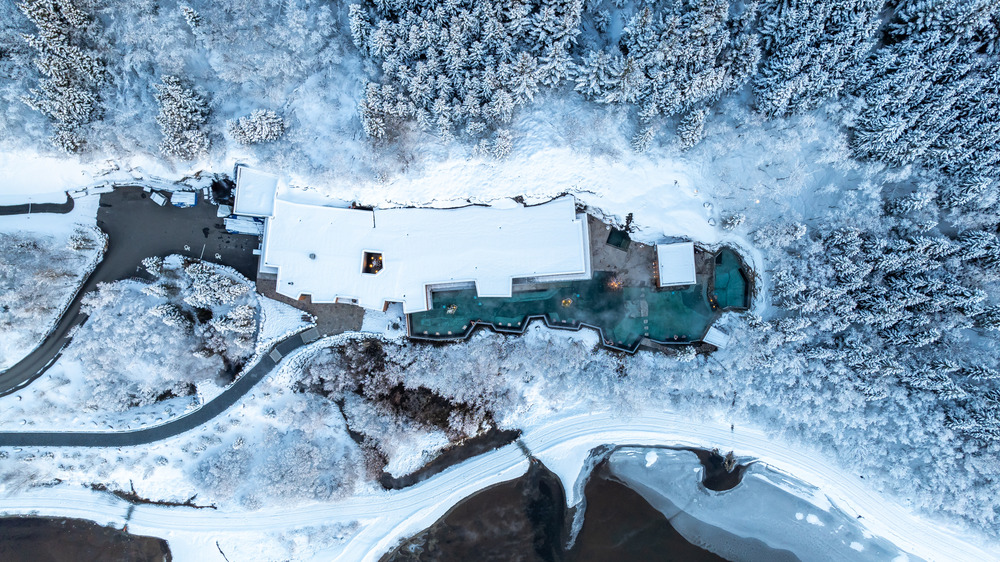
What to Pack for Iceland in November
Packing and knowing what to wear to adapt to November weather in Iceland is all about staying warm, dry, and comfortable—essential for enjoying the country at its most dramatic. The weather hovers around freezing, with rain, wind, and snow all possible in a single day, so knowing what to wear in Iceland in November makes all the difference.
Layers are essential. Start with thermal base layers—wool or synthetic, never cotton—then add an insulating mid-layer like fleece or down. On top, bring a windproof, waterproof shell jacket and pants to handle Iceland’s notorious gusts and sudden showers.
Footwear matters. Waterproof, insulated boots with good grip are non-negotiable, as trails, sidewalks, and even gas station forecourts can be slick with ice. Pack warm socks, ideally wool, and consider crampons or microspikes for walking near waterfalls or on frozen paths.
Accessories keep the chill at bay. A warm hat that covers your ears, gloves or mittens (bring a backup pair), and a scarf or buff for wind protection are musts. Sunglasses are also useful, as low winter sun can reflect off snow or wet roads. A small backpack with a water bottle, snacks, and a reusable rain cover can make long days exploring much easier.
Don’t forget the extras. A swimsuit may seem out of place, but Iceland’s hot springs and pools are essential. A headlamp is invaluable with daylight shrinking to just five hours by month’s end. For photographers, weatherproof camera covers and extra batteries are crucial, as the cold drains power quickly.
Pack less, but pack smart. Iceland in November doesn’t forgive unprepared travelers, but with the right gear, it rewards you with some of the most atmospheric landscapes on earth.
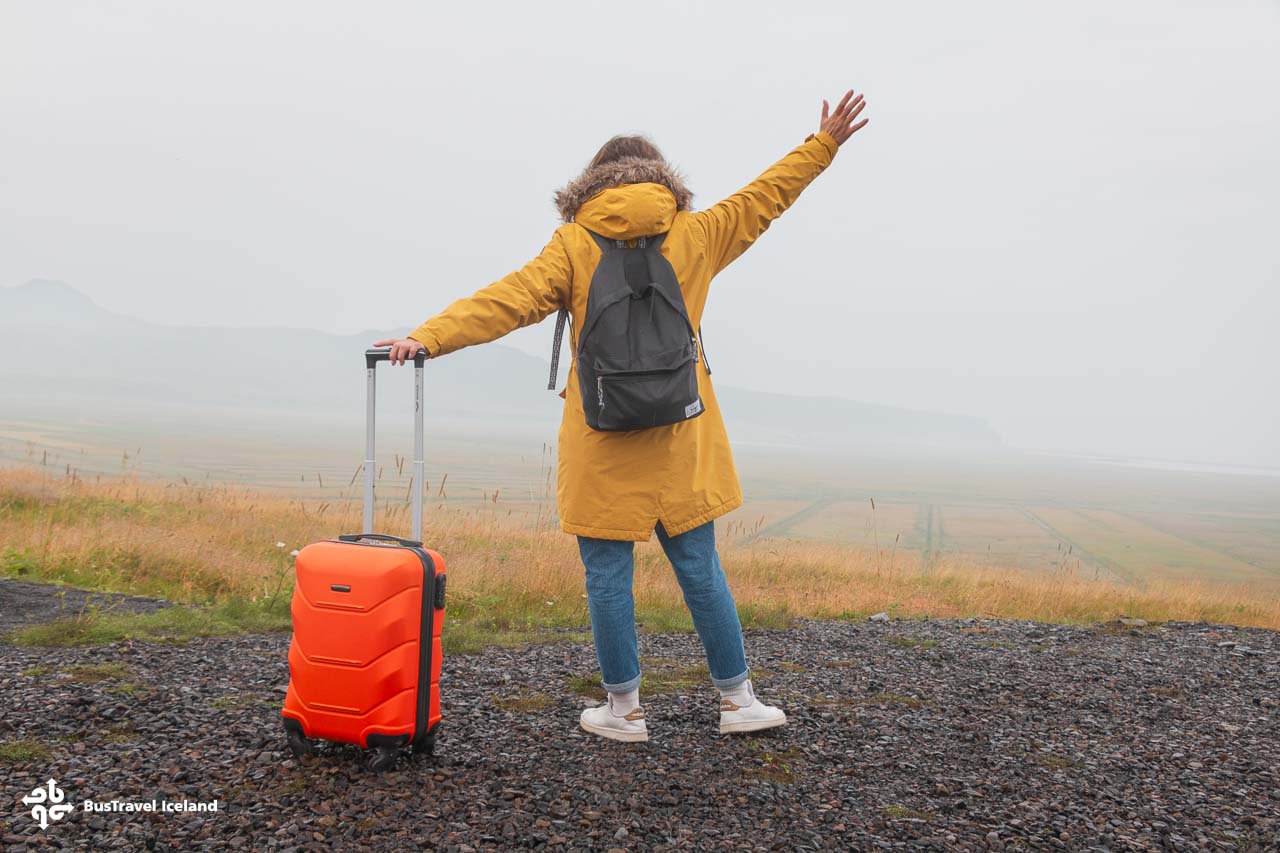
What to do in Iceland in November
As the beginning of the winter months, November in Iceland is all about dramatic landscapes, cozy hideaways, and unforgettable experiences. From chasing the northern lights across dark skies to outdoor activities like exploring icy waterfalls, black-sand beaches, and steaming hot springs, the month offers a mix of adventure and atmosphere. It’s the perfect moment to experience winter in Iceland, when every scene feels cinematic and the pace slows just enough to savor it.
Whether you’re exploring Iceland on a road trip or soaking in hot pools beneath the stars, Iceland in winter is as captivating as it is unpredictable.
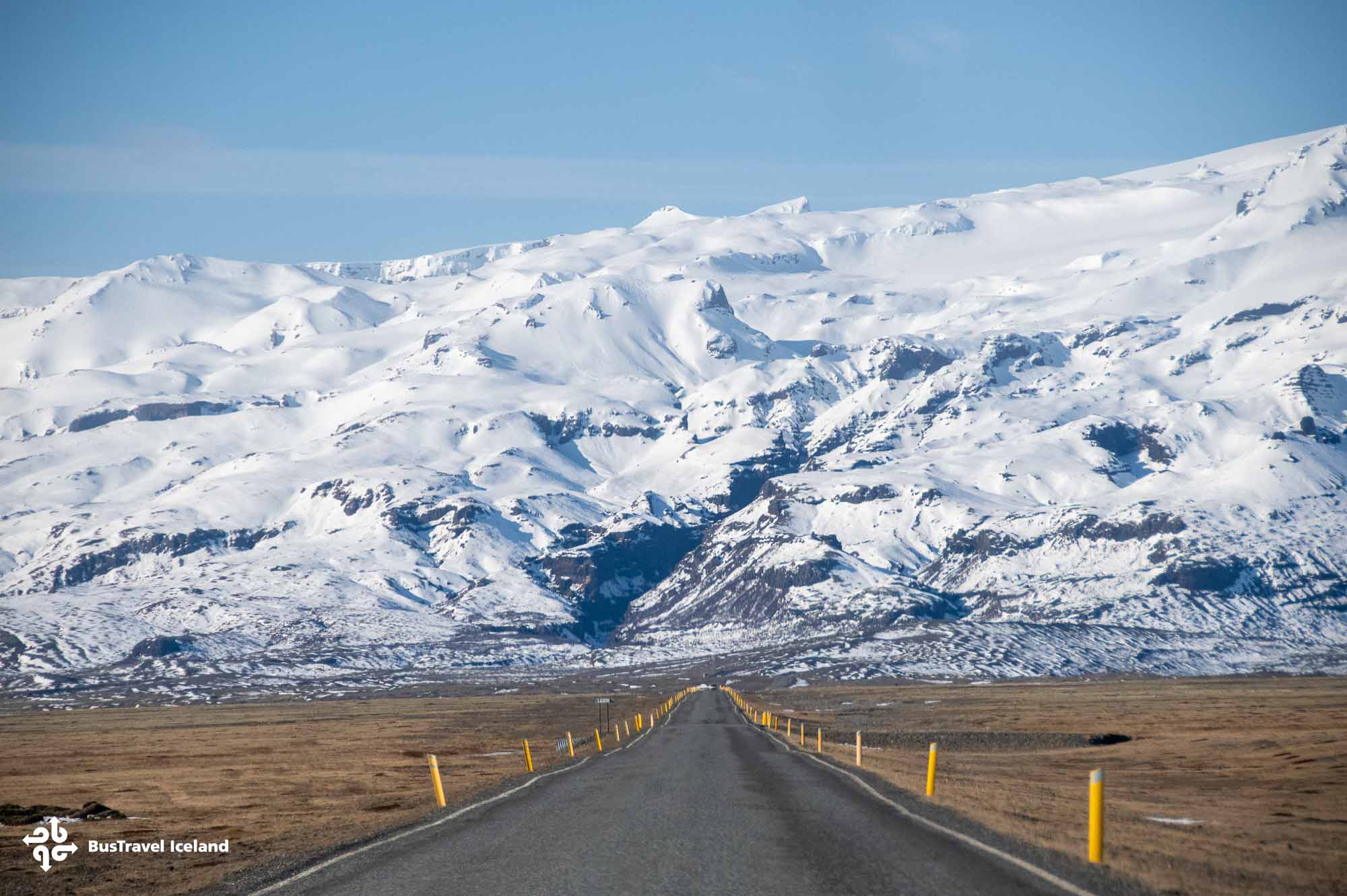
Ice Caving in Iceland in November
November is a great month to visit an ice cave in Iceland. As the temperature drops on the glaciers, the ice caves stabilize, creating crystal-clear formations of dense, blue ice that have been compressed over hundreds of years. The cold also preserves intricate layers, air bubbles, and natural textures, making each cave a unique, otherworldly spectacle. With shorter days and soft winter light filtering through the ice, exploring these frozen cathedrals becomes both a scientific marvel and an unforgettable visual experience.
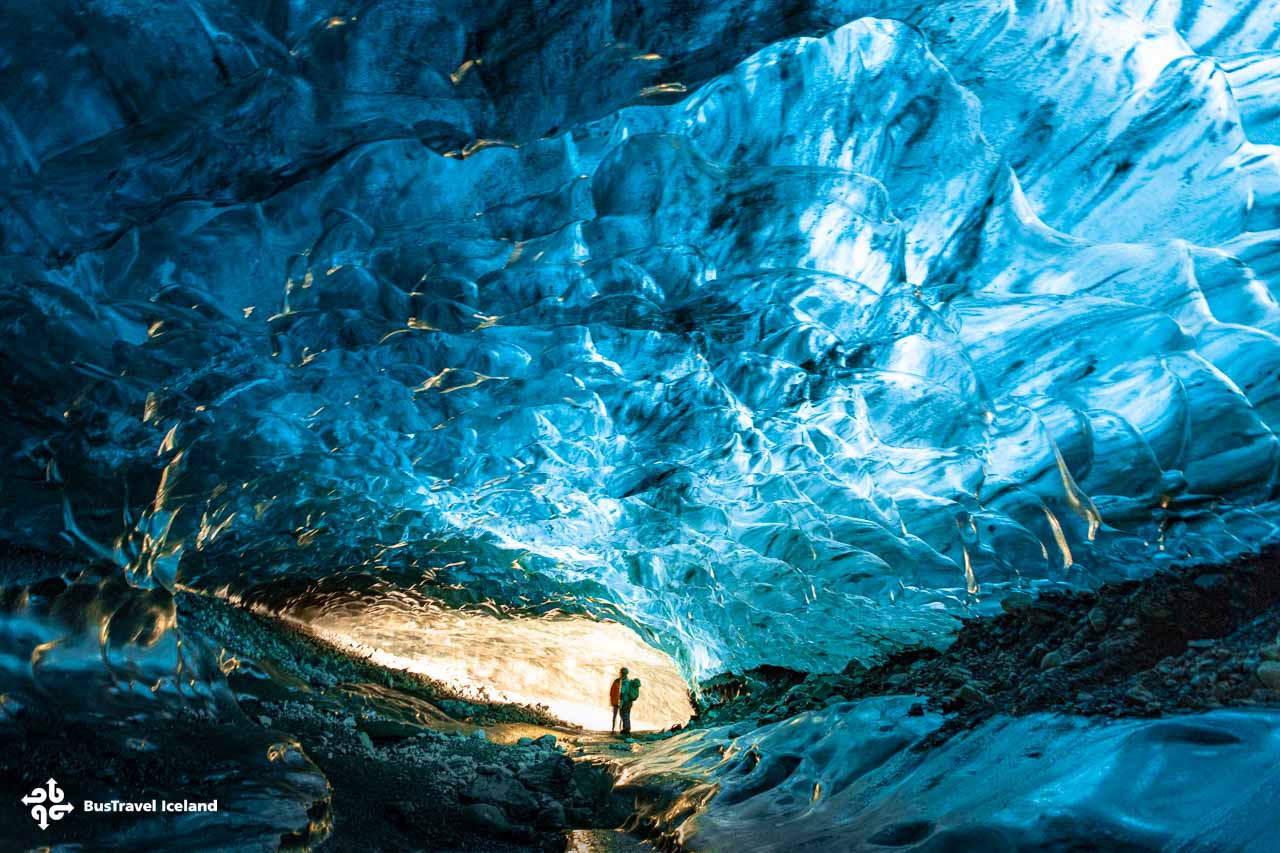
The best ice caves in Iceland are found near Vatnajökull Glacier in the southeast, particularly around Jökulsárlón and Skaftafell. These natural formations are only accessible with a guided tour, which ensures safety while exploring the shifting ice. Visitors should be prepared for slippery surfaces, sudden temperature changes, and falling ice, and always follow their guide’s instructions. Proper footwear, warm layers, and crampons are essential for a safe and unforgettable experience inside these luminous, blue caverns.
Northern lights Tours in Iceland in November
November is one of the best months to chase the northern lights in Iceland. With long, dark nights and generally clear skies, the aurora borealis often paints the sky in vivid greens, purples, and pinks.
The best viewing spots are away from city light pollution — countryside locations around Reykjavík, the South Coast, and the Snæfellsnes Peninsula offer prime opportunities.

Weather can be unpredictable, so flexibility is key, and guided Northern Lights tours provide local expertise, transport, and real-time aurora forecasts. Layered clothing, a tripod for photography, and patience make the experience both safe and unforgettable.
Glacier tours in Iceland in November
November is prime time for glacier adventures in Iceland, as fresh snow begins to blanket the landscape and the ice hardens under colder temperatures. Most tours head to the vast Vatnajökull, Langjökull, and Sólheimajökull glaciers, where you can strap on crampons to do a glacier hike across ancient ice, wander past shimmering ice formations, climb towering ice walls, or ride in a super jeep to reach remote frozen terrain. For a faster thrill, snowmobiles let you skim across endless white expanses—an exhilarating way to experience Iceland’s frozen wilderness.
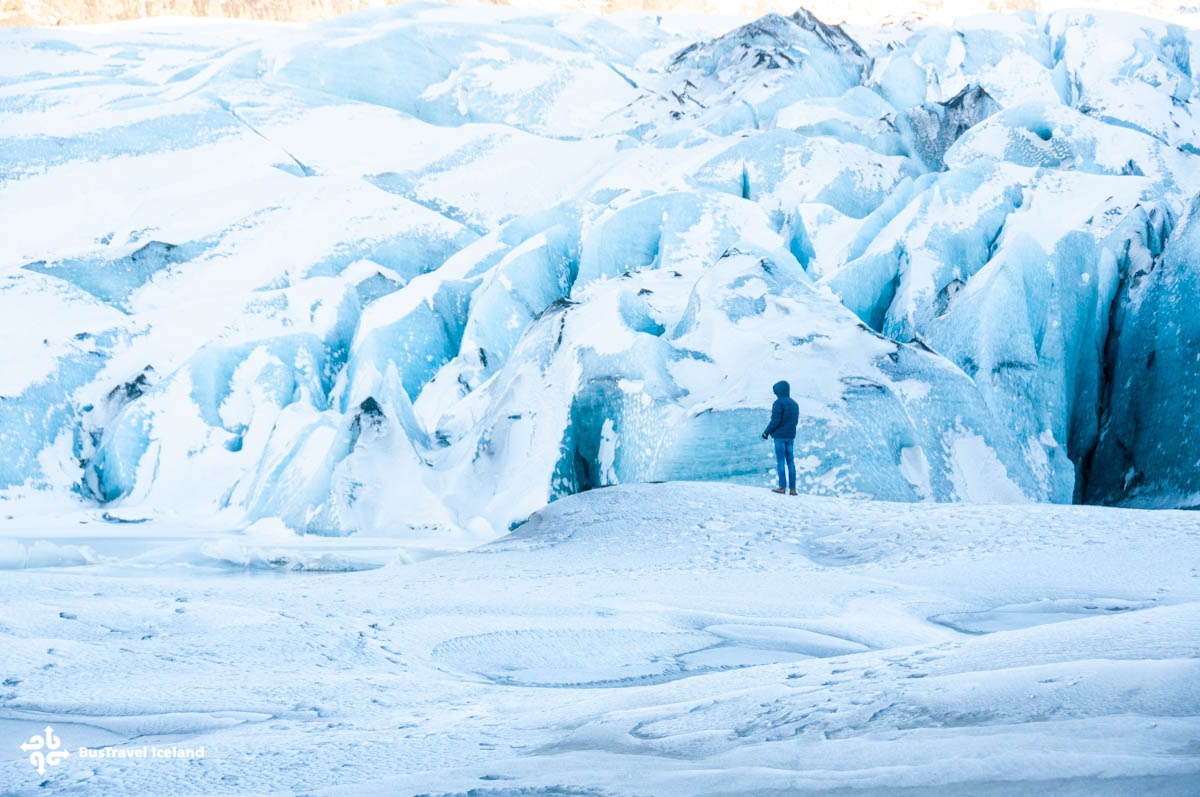
Tours are always guided—glaciers are dynamic and can be dangerous to navigate alone—but with the right gear and expert guidance, it’s one of the most unforgettable experiences of a November trip.
Expect dramatic crevasses, sweeping views, and the rare chance to walk on ice that’s thousands of years old.
Lava Caving in Iceland in November
Lava caving in November offers a dramatic contrast: snowy landscapes above ground and ancient volcanic tunnels below. Formed by eruptions thousands of years ago, these caves reveal walls of deep red, purple, and jet-black basalt, sometimes adorned with natural ice sculptures in winter. Unlike glacier or ice cave tours, lava caving is a year-round activity, making it a reliable choice when weather disrupts outdoor plans.
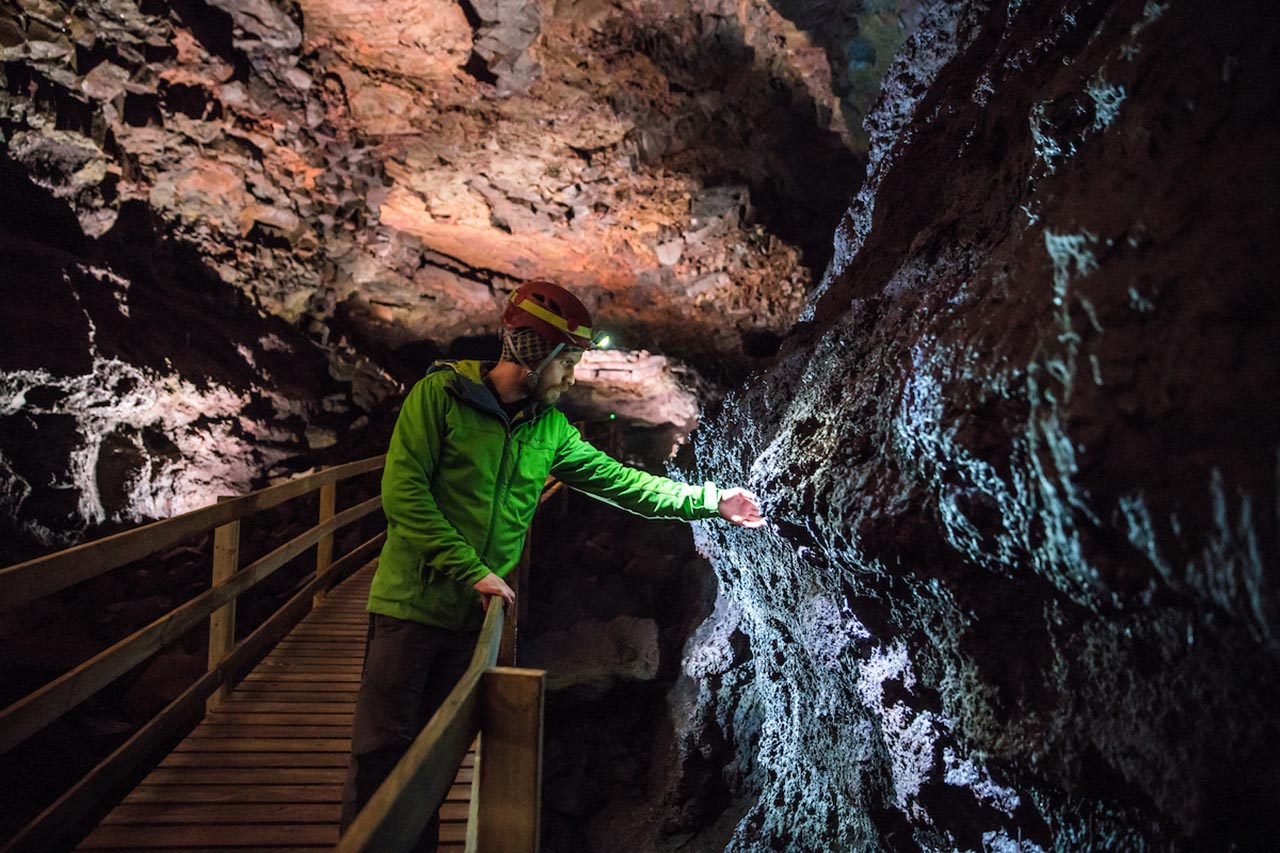
Accessible sites like Raufarhólshellir (the Lava Tunnel) near Reykjavík and Vatnshellir Cave on the Snæfellsnes Peninsula can be explored on guided tours, with helmets, lights, and geology insights included. The walks aren’t overly demanding, but sturdy footwear and warm clothing are essential. For November travelers, lava caving is a rare chance to experience Iceland’s fiery origins while staying sheltered from the winter weather.
Immersive Experiences in Iceland When November Weather Gets Stormy
When November storms sweep across Iceland, it’s a good idea to head indoors and explore the country’s culture and creativity.
Reykjavík has plenty of options: soar over glaciers, fjords, and volcanoes at FlyOver Iceland, or watch the raw power of a volcanic eruption brought to life at the LAVA Show. At the Perlan Museum, you can step inside a man-made ice cave, explore interactive glacier exhibits, and experience immersive volcano eruption shows that bring Iceland’s fiery geology to life, along with displays on the northern lights.
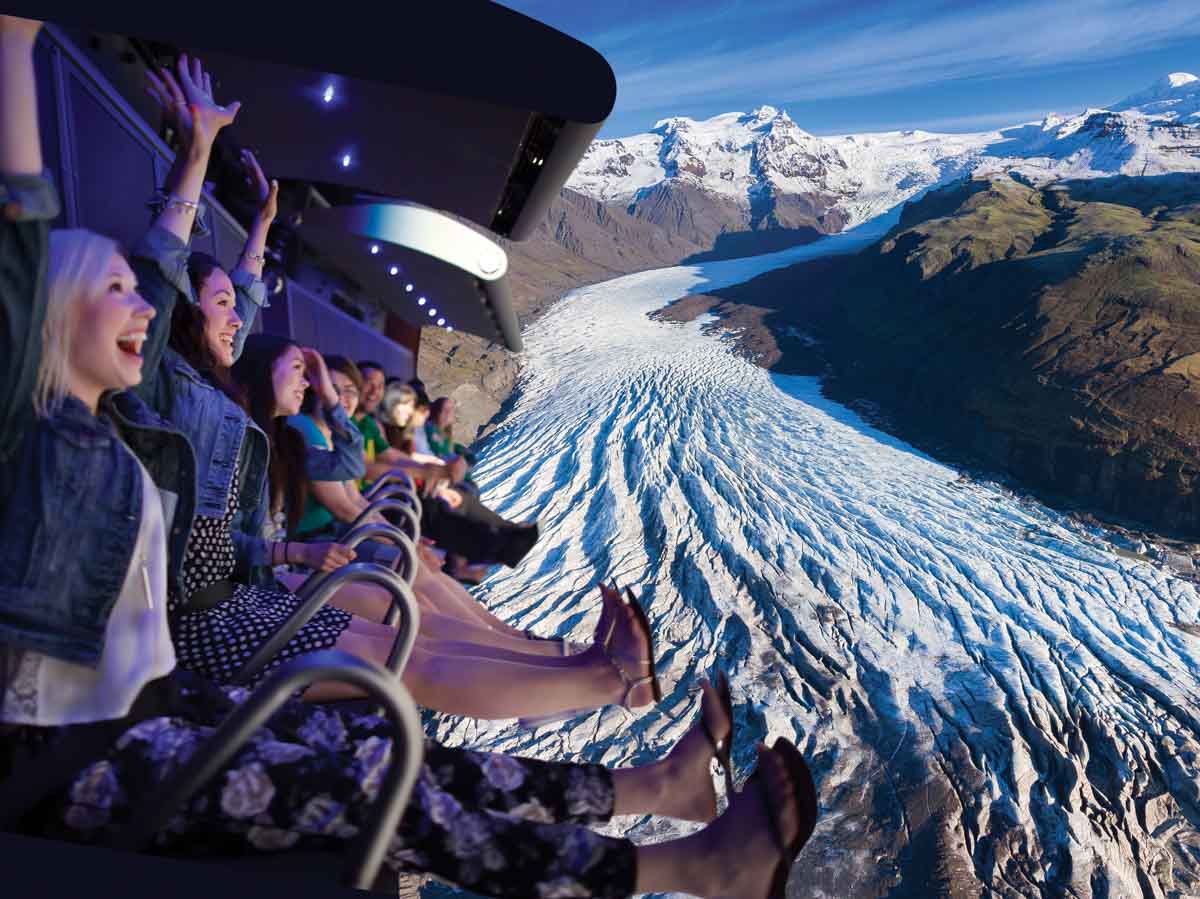
History lovers will appreciate the National Museum of Iceland or the Settlement Exhibition, which brings Viking life into sharp focus. Food tours, craft beer tastings, and even cozy concerts at Harpa Concert Hall round out the options, proving that even when the weather turns wild, Iceland offers plenty to experience indoors.
Events and Festivals in November in Iceland
Iceland Airwaves Music Festival
- Dates: November 6–8, 2025
- Location: Reykjavík
- Iceland’s premier multi-genre music festival with performances across downtown venues, featuring both Icelandic artists and international acts.
Reykjavík Christmas Markets
- Dates: Late November – Early December 2025
- Location: Reykjavík
- The city’s festive markets begin in the last week of November, offering local crafts, traditional foods, and seasonal lights.
Iceland Noir Literary Festival
- Dates: November 12–15, 2025
- Location: Reykjavík
- A celebration of literature and storytelling, with appearances by international authors including George R.R. Martin, Colm Tóibín, and Siri Hustvedt.
Christmas Market at Elliðavatnsbær in Heiðmörk
- Dates: Every Advent weekend, starting November 12–17, 2025
- Location: Heiðmörk, near Reykjavík
- A woodland market featuring handmade crafts, local food, and live music in a magical outdoor setting.
Christmas Village in Hafnarfjörður
- Dates: Late November – December 23, 2025
- Location: Hafnarfjörður
- A charming holiday village with traditional markets, seasonal performances, and festive decorations.
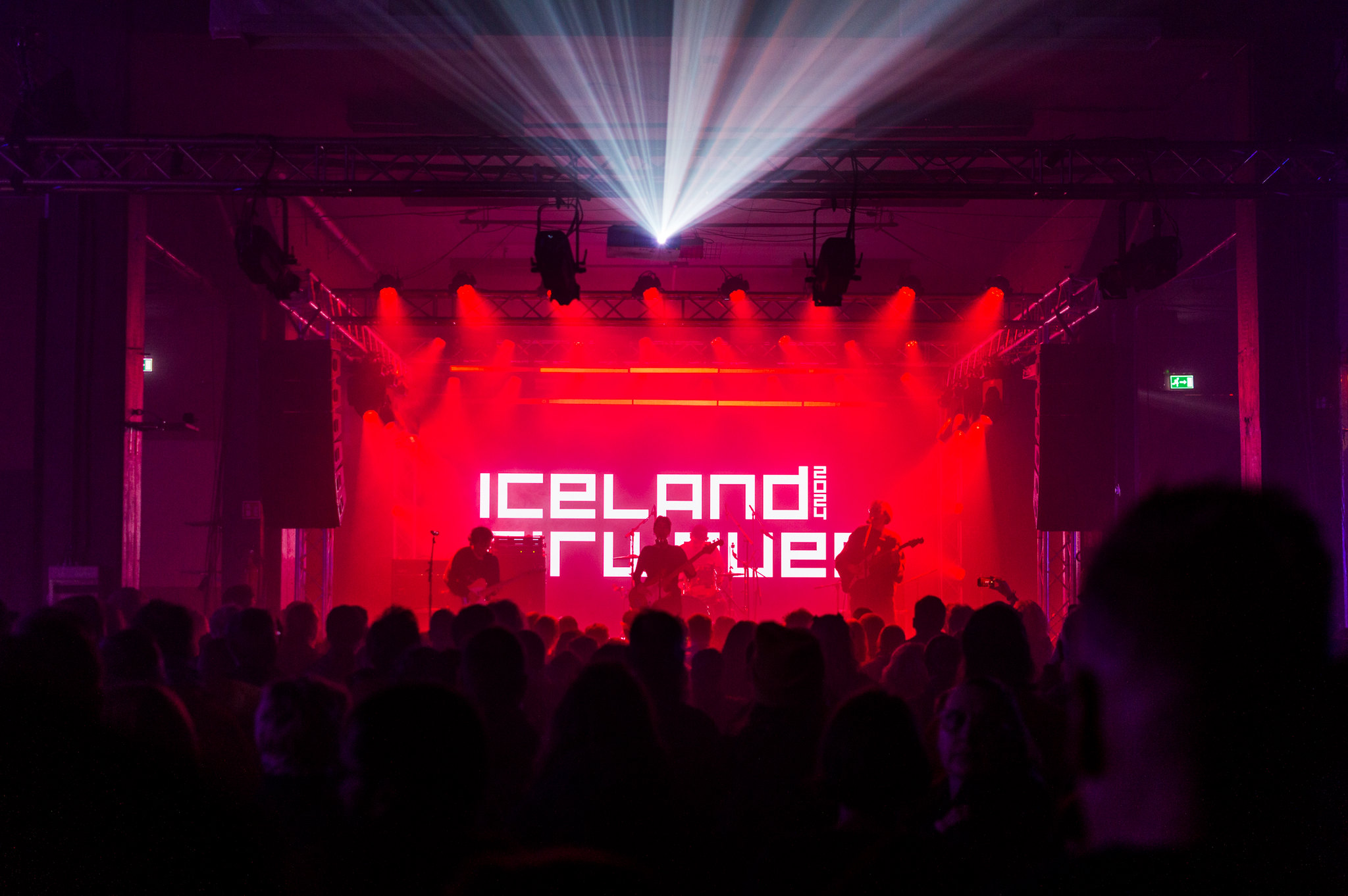
Driving in Iceland in November
Driving in Iceland in November is both rewarding and challenging. This is the time when autumn fully yields to winter, and the weather can turn quickly—sometimes in a matter of minutes. Roads may be wet, icy, or snow-covered, especially outside Reykjavík and along the north and east, while daylight hours shrink to just 5–8 per day. For many travelers, this only heightens the sense of adventure, but it does demand preparation and caution.
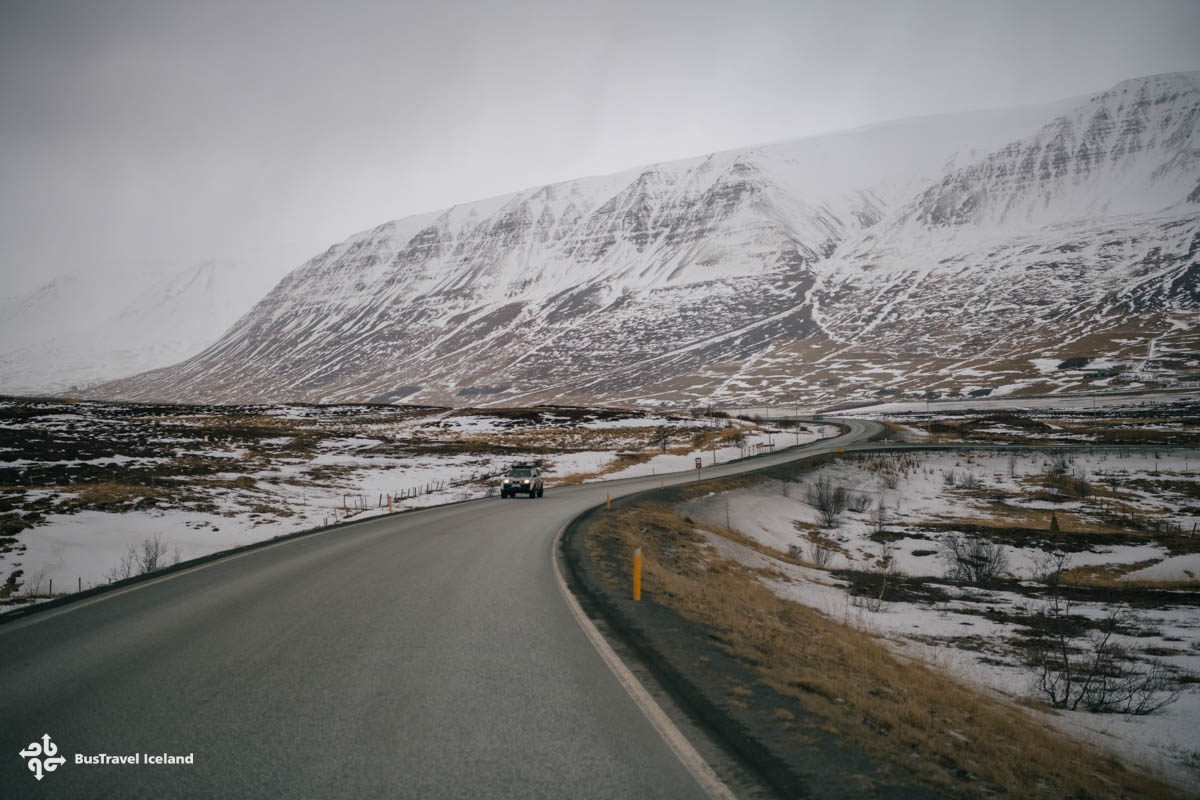
Road Conditions and Safety
Main routes like the Ring Road (Route 1) are usually open year-round and regularly maintained, making the South Coast, Golden Circle, and Reykjavík area accessible even in November. However, heavy snow or strong winds can lead to temporary closures. In North Iceland and East Iceland, conditions are often more severe, with icy stretches, snowdrifts, and reduced visibility. Highland and mountain roads are closed for the season until late spring.
Checking the Icelandic Road and Coastal Administration (Vegagerðin) for real-time updates before setting out is essential. Also, pay close attention to weather conditions, as they can change quickly—what begins as a clear, calm drive can turn into snow, ice, or strong winds within a few hours.

Car Rentals and Equipment
Most car rental companies in Iceland equip vehicles with mandatory winter tires from November 1st, making it easier to handle icy or snowy roads. If you plan to explore beyond Reykjavík or the south coast, it’s best to choose a 4×4 rental car in November, giving you better stability and clearance on icy or snow-covered roads. Extras such as gravel protection or sand-and-ash insurance can also be worthwhile, especially in exposed coastal regions.
Winter Tires and Equipment
From November through mid-April, all vehicles in Iceland are legally required to have winter tires, and rental companies automatically fit their cars accordingly. These tires make a crucial difference:
- Studded tires grip icy surfaces with tiny metal studs.
- Non-studded “friction” tires use softer rubber and deep tread patterns to stay flexible in cold and grip snow and slush.
While winter tires significantly improve safety, they don’t eliminate all risks—slowing down, braking earlier, and driving cautiously are still key. For longer journeys outside Reykjavík or along rural routes, a 4×4 vehicle is strongly recommended for stability and clearance. Many travelers also opt for extras like gravel protection or sand-and-ash insurance when renting.
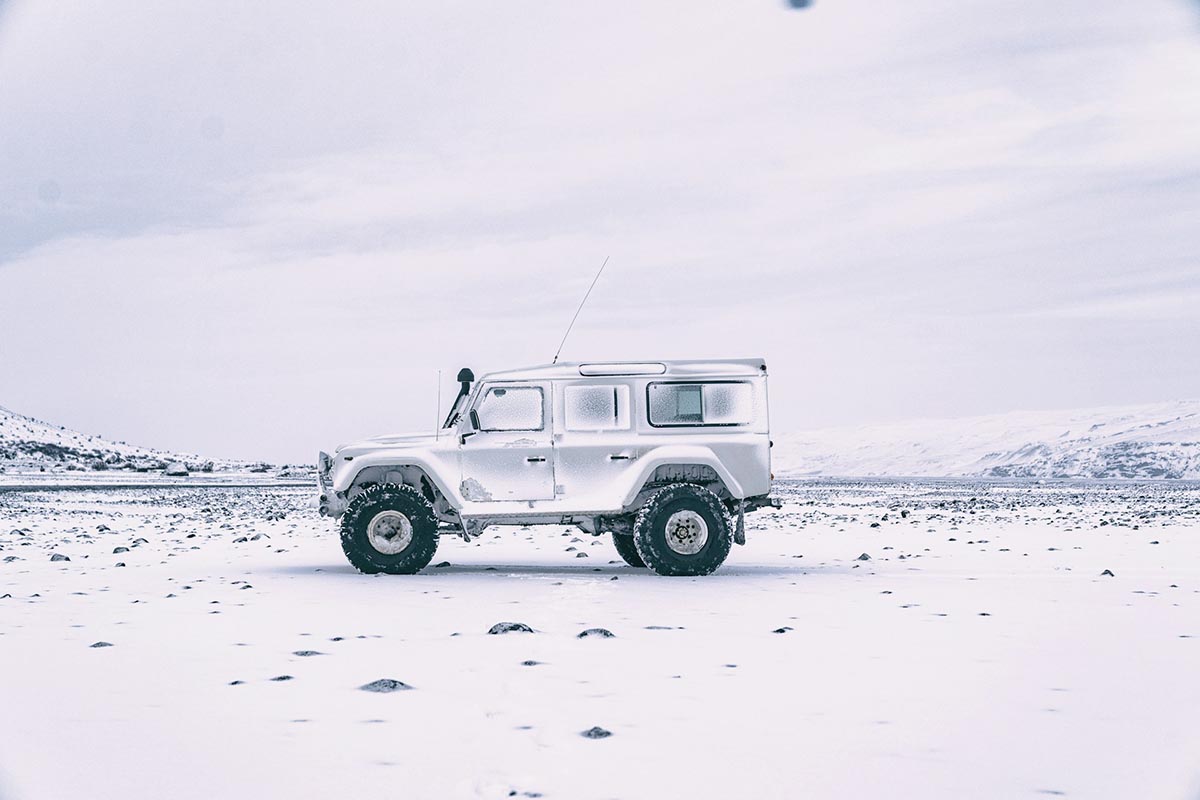
Driving Habits and Hazards
Headlights must be on at all times in Iceland, day or night. Drive slower than usual, leave extra space between vehicles, and watch for sudden wind gusts along the coast that can make even opening car doors tricky. Always check weather in Iceland in November before heading out—conditions can shift from calm to stormy in under an hour.
Daylight and Planning
With limited daylight, it’s wise to plan your road trip driving for the middle of the day. Use the brighter hours for exploring and save evenings for indoor activities, hot spring soaks, or northern lights hunting. Always build in more time than you think you’ll need—on an Icelandic road trip, photo stops and unpredictable weather often mean drives take longer than expected.

What’s So Special about Iceland in November
In November, Iceland’s landscapes take on a raw, cinematic quality. Waterfalls glisten with frost, their torrents framed by icy edges that sparkle in the pale winter light. Mountains are dusted with snow, their jagged peaks emerging from misty valleys, while black-sand beaches stretch into the horizon, streaked by winter waves and occasional frost. Lava fields and moss-covered rocks are muted under soft snow, creating a moody, otherworldly palette of gray, white, and deep green. Glaciers harden and ice caves reveal shimmering blue interiors, while rivers and lakes reflect low, shifting sunlight. Even the skies contribute to the drama, often layered with brooding clouds that part just enough for a golden sunrise, a fleeting rainbow, or the green and purple ribbons of the northern lights at night.
Beyond the landscapes, the quieter pace of November allows travelers to truly savor Iceland’s natural beauty and charm. Cozy cafés, steaming hot springs, and remote fjords feel more intimate, and every drive, hike, or sightseeing stop feels like a private encounter with the country’s wild, otherworldly terrain. For photographers, adventurers, and anyone seeking a moody, magical escape, November offers Iceland at its most cinematic—and at its most rewarding.
